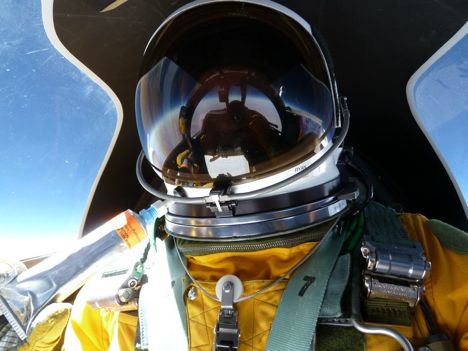MABEL: Flying on a high-altitude aircraft at the brink of space, the MABEL instrument is helping scientists to simulate measurements from NASA’s next ice-observing satellite, ICESat-2.
April 7, 2011
MABEL flew her final science mission of 2011 (4/5) over White Sands Missile Range. The weather over this area was clear when we flew it, however, weather rolled into the area just as the plane left our target.

White Sands was chosen as a MABEL target because we have been using the area as a ground-control site since ICESat was launched in 2003. Two ICESat tracks crossed in the center of the dune field; where they cross, ICESat researchers have recently planted reflectors that we hope to see in the MABEL data. These reflectors will help us validate MABEL’s elevation determination accuracy.
Also on this flight, we also attempted to collect data from deciduous trees in Arkansas. From Dryden Flight Research Center, to New Mexico, on to Arkansas, and then back to Dryden is a 9 hour mission.

However, between White Sands and Arkansas, MABEL’s laser stopped firing. This is not something that we were prepared to deal with in the field. So, given that we were already near the end of this mission, we decided we’d call this trip a success, given all that MABEL had already accomplished and given the science objectives that the instrument deployment had met:
1) Hit ground-control points set up at White Sands to validate MABEL
2) Collect tree data for ICESat-2 vegetation scientists
3) Collect snow data for ICESat-2 glaciologists
4) Collect data over the ocean and bright clouds for ICESat-2 instrument scientists
We are now headed home. We have had a fantastic time working with the pilots and mechanics here at Dryden Flight Research Center. They are great at what they do, making their components the smoothest parts of the complex MABEL equation. We might not have any other missions on the ER-2 this spring, but you can still follow their flight activities at their Twitter feed: @NASA_Airborne.



